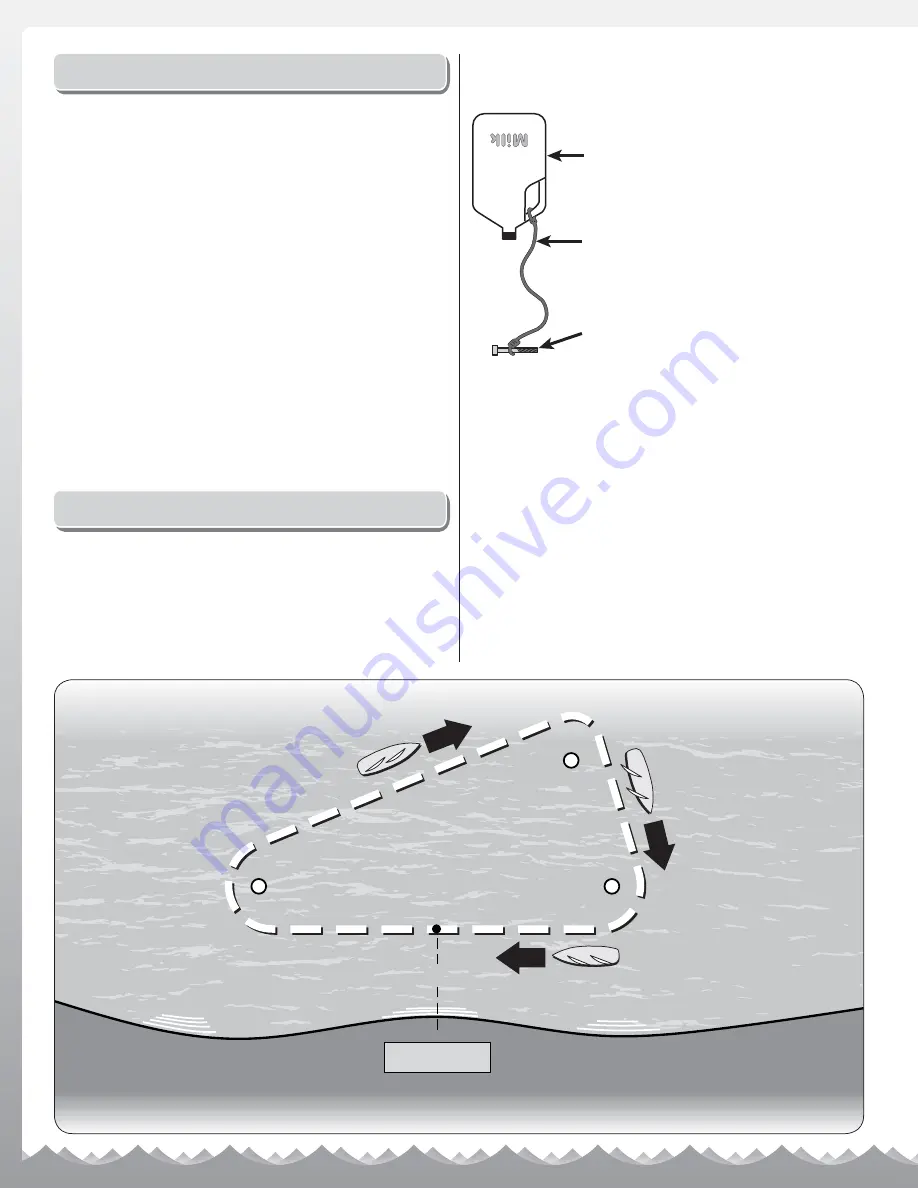
10
THE WAITING GAME
If for whatever reason, you lose control of your Paradise
sailboat, wind and water currents will slowly carry it toward
shore. The bad news is that the boat could be carried to the
opposite shore. Keep in mind things like wind direction and
size of the pond or lake when surveying areas to run your
sailboat. We recommend that you do not attempt to operate
your sailboat on any “free fl owing” bodies of water such as
rivers or creeks.
If your boat gets stuck in weeds or runs aground, use a
fi shing rod with at least 12lb. line and a tennis ball tied to the
end to retrieve it. Above all, NEVER attempt to swim after a
stalled or stuck boat.
If you intend to run on salt water, be sure to do the following:
•
Tape the hatches shut for added protection.
•
Use petroleum jelly on the rudder and keel shafts.
•
Rinse thoroughly with freshwater after every run.
GOOD LUCK AND GREAT BOATING!
RACING
Although it is very enjoyable to go out and run the Paradise
sailboat by yourself, we think the real fun and excitement is
experienced when you get involved in RACING!
Racing does not have to be an organized and sanctioned
competition to be fun. In fact, small informal races can be
very exciting without the stress that comes with formal events.
Here are some suggestions for setting up a simple racecourse
for boats:
Gallon-size plastic milk jug
Nylon string
(long enough to reach bottom)
Bolt, rock, or heavy
object for anchor
•
Make 2 to 4 simple and inexpensive “marker buoys” with
empty milk jugs, string, and heavy objects for anchors,
similar to the above sketch.
•
For “oval racing” place the buoys similar to the sketch
below.
NOTE:
These patterns are not based on any sort of
offi cial standards; therefore, you may set up race courses
any way you desire, using your imagination to make the
races more interesting. Usually the smaller courses will
provide more action and excitement.
•
The length of the races can be determined by a set number
of laps around the buoys (for example, the fi rst boat to
complete 5 laps is the winner); or by time (for example,
whoever is leading at the end of two minutes is the winner).
75 – 125 ft
30
–
50
f
t
Start/Finish
Drivers






























